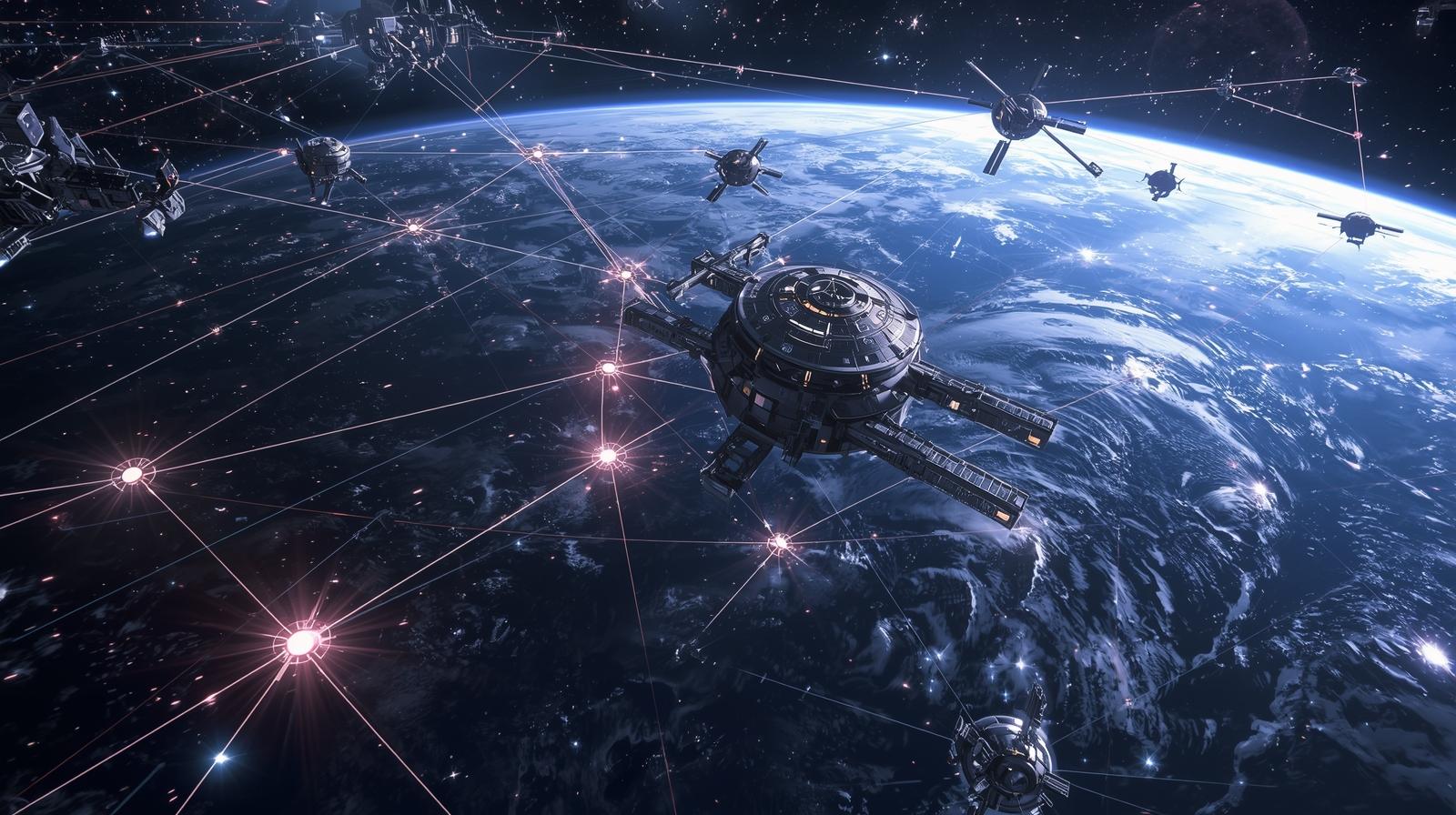The increasing reliance on space-based communication systems has become a defining feature of modern warfare. During the ongoing conflict between Ukraine and Russia, satellite networks have played a critical role in maintaining secure communications, enabling intelligence gathering, and supporting command and control operations. Since the start of Russia’s full-scale invasion in 2022, Ukraine has received over 50.000 Starlink terminals, according to Kiev Independent (2025), to ensure that the Command, Control, Communications, Computers, and Intelligence (C4I) capabilities are maintained, since traditional methods are easily detected and dealt with.
Bearing this in mind, we must discuss whether EU member states should invest and create an EU-based low orbit satellite mesh to support C4I capabilities and future-proof our Armed Forces for future conflicts, such as Infrastructure for Resilience, Interconnectivity and Security by Satellite (IRIS²), or keep on relying in commercial solutions, such as Starlink, and how can we keep this type of infrastructure safe from the activities of cyber threats and other agents.
Space Assets as Critical Infrastructure: What are we protecting?
According to US policy and cybersecurity frameworks, critical infrastructure refers to “systems and assets, whether physical or virtual, so vital that their incapacity or destruction would have a debilitating impact on security, national economic security, national public health and safety, or any combination of those matters” (National Institute of Standards and Technology, 2015). One of Russia’s strategies consists in focusing these specific targets in Ukraine, as we watch the crumbling of national services, train stations, hospitals, schools due to the ongoing targeting of conventional means of communications, as depicted by United24 Media (2025).
Space-systems are deeply embedded in modern economies and defense operations as they synchronize power grids, enable global communications, support military C4I systems, and provide essential services for transportation and finance. Their disruption would create cascading failures across multiple sectors (Georgescu et al., 2019). This was evident as the Ukrainian forces were preparing a drone strike in the region of Crimea; due to lack of coverage from the commercial solutions, the operation took massive tolls for the Ukrainian forces, showing the sensitivity of these operations and the centralization of power in a non-governmental solution. (Issacson, 2023)
Recognizing these assets as a top priority to keep the sovereignty of a capable and proactive Government, Space becomes increasingly “congested, contested and competitive”, with threats ranging from cyberattacks and jamming to kinetic anti-satellite weapons (European Union Agency for Cybersecurity, 2025). Protection then requires us to think about cybersecurity frameworks tailored for space systems (e.g Space Policy Directive-5), international cooperation for norms and standards and resilience measures such as redundancy, encryption, and zero-trust architectures (Cybersecurity and Infrastructure Security Agency, 2024).
Conclusion
The growing dependence on space-based systems for military and civilian operations underscores the urgent need to classify these assets as critical infrastructure and implement robust protection measures for these assets. Therefore, we must ensure that, as we do for “regular” critical infrastructure, space assets must also be categorized as critical. As demonstrated in Ukraine, the resilience of C4I capabilities hinges on secure satellite communications, which are increasingly targeted by cyber and physical threats. To safeguard sovereignty and operational continuity, EU member states must adopt comprehensive cybersecurity frameworks, as outlined by EU and Non-EU policies, and develop resilient architectures through redundancy, encryption, and zero-trust principles.
Furthermore, Europe should accelerate initiatives like IRIS² to reduce the reliance in commercial solutions and ensure strategic autonomy. In an era where Space is becoming increasingly congested, proactive investment in secure space infrastructure is not optional – it is a strategic imperative.
Lisbon, November 23rd, 2025
Eduardo José da Costa Pinto Silva Esteves
EuroDefense-Jovem Portugal
References
European Union Agency for the Space Programme. (2025, April 25). IRIS² – Infrastructure for Resilience, Interconnectivity and Security by Satellite. https://www.euspa.europa.eu/eu-space-programme/secure-satcom/iris2
Kyiv Independent. (2025, April 3). Ukraine receives 5,000 more Starlink terminals from Poland, minister says. Kyiv Independent. https://kyivindependent.com/ukraine-receives-5-000-more-starlink-terminals-from-poland-minister-says
National Institute of Standards and Technology. (2015). Critical infrastructure. NIST Glossary. https://csrc.nist.gov/glossary/term/critical_infrastructure
United24 Media. (2025, March 15). How Starlink became Ukraine’s lifeline in war. United24 Media. https://united24media.com/war-in-ukraine/how-starlink-became-ukraines-lifeline-in-war-5774
Georgescu, A., Gheorghe, A. V., Piso, M.-I., & Katina, P. F. (2019). Critical space infrastructures. In Topics in Safety, Risk, Reliability and Quality (Vol. 36, pp. 21–36). Springer. https://doi.org/10.1007/978-3-030-12604-9_2
Isaacson, W. (2023, September 7). Elon Musk’s Starlink decision exposed the dangers of privatized war. The Washington Post. https://www.washingtonpost.com/opinions/2023/09/07/elon-musk-starlink-ukraine-russia-invasion/
European Union Agency for Cybersecurity. (2025, March). Space threat landscape. ENISA. https://www.enisa.europa.eu/sites/default/files/2025-03/Space_Threat_Landscape_Report_fin.pdf
Executive Office of the President. (2020, September 4). Space Policy Directive-5: Cybersecurity principles for space systems. Federal Register. https://www.federalregister.gov/documents/2020/09/10/2020-20150/cybersecurity-principles-for-space-systems
Cybersecurity and Infrastructure Security Agency. (2024). Space systems and services. CISA. https://www.cisa.gov/space-systems






